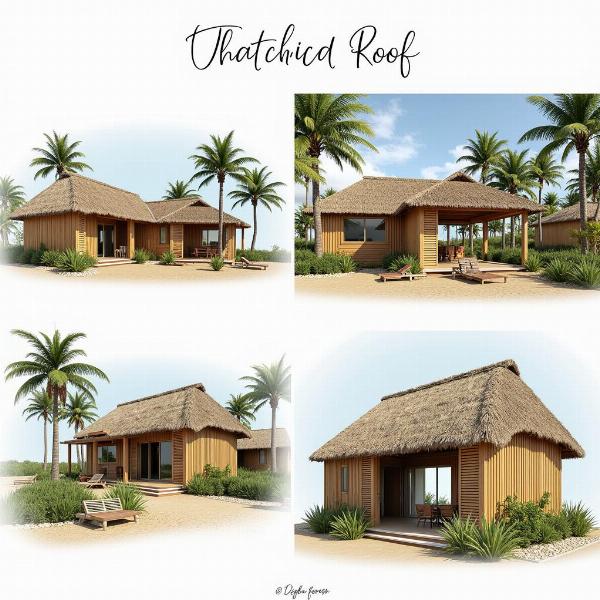Thatched roofs evoke images of rustic charm and traditional living. But what exactly does “thatched” mean in Hindi? This article explores the various Hindi translations of “thatched,” delving into their nuances and cultural significance. We’ll also examine the materials used for thatching in India, the associated architectural styles, and the implications of this traditional building technique in modern times.
Unraveling the Hindi Translations of “Thatched”
The most common Hindi word for “thatched” is छप्पर (chhappar). This word carries a strong connotation of rural life and simplicity. Imagine a small village hut with a sloping roof made of dried grass – that’s the image छप्पर conjures up. Other related terms include खपरैल (khaprail), which specifically refers to a roof made of tiles, often seen in slightly more affluent rural settings. For a more poetic or literary context, the word छाया (chhaya), meaning “shade” or “cover,” can also be used to evoke the image of a thatched roof providing shelter.
Materials Used in Traditional Indian Thatching
Traditionally, thatched roofs in India are constructed using readily available natural materials. Dried grass, straw, reeds, palm leaves, and bamboo are commonly employed, reflecting the resourcefulness and adaptability of local communities. The specific materials used often depend on the region and its climate. For instance, coastal areas might utilize coconut palm leaves, while regions with abundant bamboo might incorporate it into the roof structure.
Architectural Styles and Thatched Roofs
Thatched roofs are integral to various vernacular architectural styles across India. From the simple huts in rural villages to more elaborate structures in some tribal communities, thatching has played a crucial role in shaping the Indian landscape. The sloping design of thatched roofs is particularly well-suited to the Indian monsoon, allowing rainwater to run off efficiently.
Thatched Roofs in Modern India: A Balancing Act
While concrete and metal roofs are becoming increasingly common, thatched roofs continue to hold a place in modern India. They represent a connection to traditional building practices and offer a sustainable, eco-friendly alternative. However, thatched roofs also face challenges in terms of durability and fire safety.
What are the advantages of a thatched roof?
Thatched roofs offer several advantages, including natural insulation, eco-friendliness, and a unique aesthetic appeal. They are often more affordable than other roofing materials, particularly in rural areas where the necessary materials are readily available.
How long does a thatched roof last?
The lifespan of a thatched roof varies depending on the materials used, the climate, and the level of maintenance. With proper care, a well-constructed thatched roof can last for several decades.
 Modern Interpretation of a Thatched Roof in a Resort
Modern Interpretation of a Thatched Roof in a Resort
FAQ
- What is the most common Hindi word for thatched? The most common word is छप्पर (chhappar).
- What materials are used for thatching in India? Common materials include dried grass, straw, reeds, palm leaves, and bamboo.
- Are thatched roofs still used in modern India? Yes, although other materials are gaining popularity, thatched roofs are still used, especially in rural areas.
- What are the benefits of a thatched roof? Benefits include natural insulation, eco-friendliness, and affordability.
- What are the drawbacks of a thatched roof? Drawbacks can include lower durability compared to other materials and concerns about fire safety.
- What is the cultural significance of thatched roofs in India? Thatched roofs represent a connection to traditional life, particularly in rural areas, and are often associated with simplicity and resourcefulness.
- Are there different styles of thatched roofs in India? Yes, the style of thatched roofs can vary regionally and reflect different architectural traditions.
Related Articles
Meaning-Hindi.in is your trusted partner for high-quality Hindi translation services. We specialize in various areas, including business and commercial document translation, certified and legal document translation, technical and user manual translation, website and software localization, educational and academic document translation, and express translation services. Our expertise in various specialized fields allows us to deliver accurate and culturally sensitive translations for diverse clients. Contact us today for all your Hindi translation needs at [email protected] or call us at +91 11-4502-7584. Meaning-Hindi.in is dedicated to bridging language barriers and fostering clear communication.